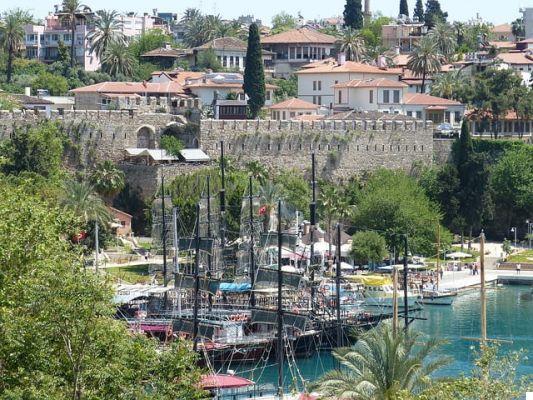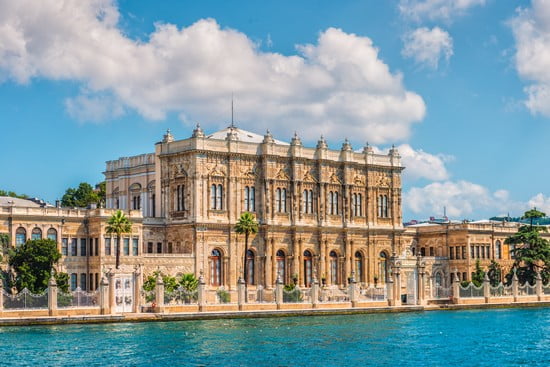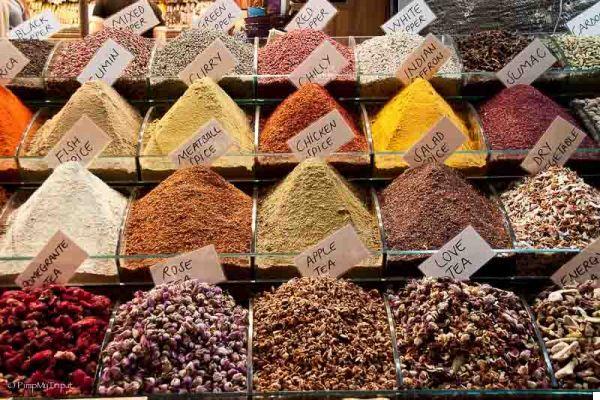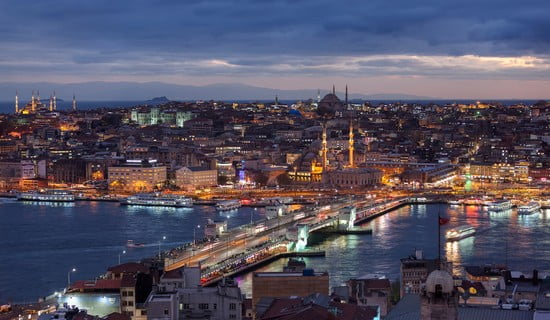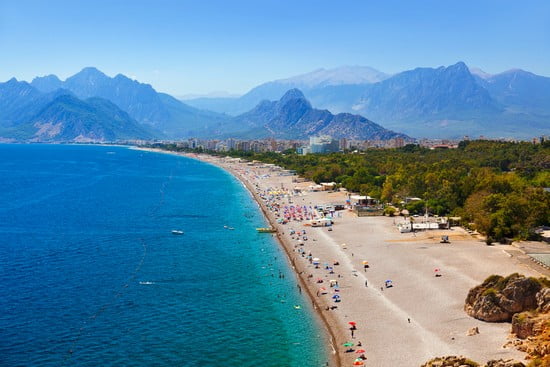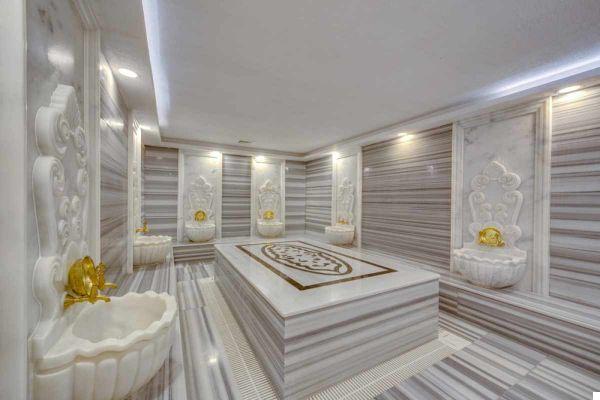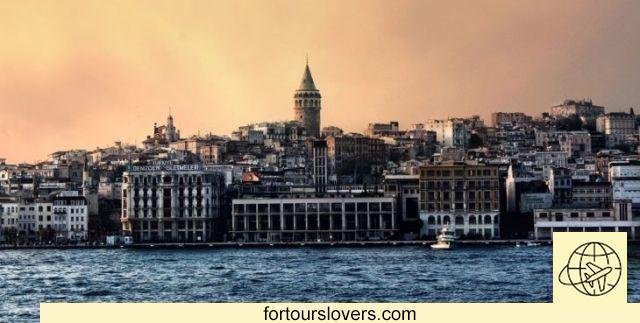
Istanbul
12 things to do and see in Istanbul and 4 not to doApplies to Istanbul what has already been said for other "monumental" cities. It is impossible to indicate all the attractions that this “megalopolis” offers. Equally difficult, then, is choosing what to give priority to, which is why the only commitment that can be assumed is to try to account for his multiculturalism. A 'identity suspended between Europe and Asia which has two different faces: the tourist one, which attracts a greater number of visitors every year, and the political one that sometimes spares social tensions. En passant, without any claim of completeness we remember: the Kurdish question, la civil war in Syria, the failed coup of 2016 and above all, the coexistence more and more complicated between the secular part and westernized of the city and that Islamic. Therefore, before leaving, it is always advisable to consult the place "Traveling safe" del Ministry of Foreign Affairs, as well as register in the place "Where we are in the world" always within theCrisis Unit of the Farnesina. Enjoy the reading.
1 Hagia Sophia
Armenian, Orthodox, Protestant churches, synagogues and many mosques: few clues, yet sufficient to understand how muchtourist identity of Istanbul owes his religious history. The Hagia Sophia is the emblem of this superimposition: built in 537 at the behest of Justinian this church was first Christian cathedral of the Byzantine rite, then catholic cathedral, then again mosque and, finally, from 1935, museum for want of Ataturk, father of modern Turkey. It was thanks to this latter use that the Byzantine imprint, particularly evident in the wall decorations, came to light. For over 500 years, in fact, after the Muslim conquest of Constantinople (one of the ancient names of the city together with that, still earlier, of Byzantium) all the decorations attributable to human figures and other zoomorphisms were covered consistently with theiconoclastic approach of Islam. The basilica plan, however, remained identical with the addition of mihrab, the niche for prayer obtained in the space of the main apse, and del minbar, the pulpit intended for the sermons of the Imam. Among the many things to see in this huge "Church-museum" we especially point out the XNUMXth century mosaics that decorate the main apse and the atriums that precede the 9 entrances. The most famous mosaic is located just above the Imperial Gate and depicts Christ Pantocrator. Hagia Sofia (Church of Divine Wisdom), in short, in addition to being one of the most famous tourist attractions in Istanbul is the largest church in ancient Christianity. Christianity which, however, "has to deal" with re-Islamization of Turkish society pushed by the party of Recep Tayyip Erdoğan, current president of the nation.
2 Blue Mosque
Right in front of Hagia Sophia there is Sultanamhet Camii, better known as Blue Mosque. The name derives from the over 20.000 blue tiles that decorate the dome and that, together with the 260 windows that illuminate the building, give life to spectacular light games especially at sunset. The Blue Mosque, according to many the most beautiful in Istanbul, was built between 1609 and 1617 by order of Ahmet I. Through the grandeur of the building, the sultan thought he could obscure the complicated diplomatic and military events that in those years engaged the Ottoman Empire on several fronts. Considering the cost of the work, the sultan, for the first time in the history of the Empire, resorted to public resources to finance the project entrusted to the court architect Mehmet Aga. It was not the only deviation from tradition. There was another, much more important one, regarding the construction of the minarets which even equaled those of Mecca in number (6). Thus, to avoid accusations of sacrilege, Ahmet I himself financed the construction of another minaret in Mecca in order to reconfirm its primacy. It is not over because the Blue Mosque also housed one Koranic school (madrasa), a hospital it's a canteen for the poor. Today, of that original project, only the sultan's canteen and mausoleum remain. The Blue Mosque is open at external visits provided, of course, to respect i Islamic precepts on clothing: no part of the body uncovered and for women the obligation of the headgear.
3 Topkapi Palace
Overlooking Bosphorus, behind the Hagia Sophia, Topkapi Palace (Topkapi Sarayi) was for over 4 centuries, until the mid-800th century, the nerve center of Ottoman power. The location on the sea served not only to reaffirm the supremacy of the empire, but also to control the maritime traffic in transit between the Black and Mediterranean Seas. The visit of the residence takes away the whole day, which is why most tourists limit themselves (so to speak) to visit theHarem and Imperial Treasury, respectively in the Second and Third Courts (there are four courts in all). The harem, contrary to the vulgate, was not just the sultan's room of sexual pleasures. On the contrary, he led his private life here surrounded by wives, concubines and mother figure (Valide Sultan). The latter, the only one to have free access to all 300 and passes rooms of the structure. As for the Imperial Treasury, however, there are preserved clothes, weapons and valuables of the sultanate. In this regard, the Topkapi dagger and Kasicki diamond (86 carat). For more information on hours, days of opening and closing, visit methods and prices consult the Official site topkapisarayi.gov.tr (English version available).
4 Museum of Archeology
Not far from Topkapi Palace is the Archeology Museum of Istanbul. These are 3 different buildings (Archeology Museum; Museum of the Ancient East e Tiled Pavilion) each, however, of fundamental historical importance. In the archeology museum there is the famous Sarcophagus of Alexander Great. The tomb, found during an excavation campaign in Sidon, in southern Lebanon, depicts the deeds of the great Macedonian conqueror even if, inside, another individual is buried, that Abdalonimo, king of Sidon in 332 BC. C. (apparently, on the impulse of Alexander the Great himself). Alexander's sarcophagus is not the only valuable artefact present in this museum complex. In fact, the Kadesh Peace Treaty, universally recognized as the oldest diplomatic document in the history of mankind. This treaty establishes peace between Hattisili, king of the Hittites and Ramesses II, Egyptian pharaoh. Considering the antiquity of the stipulation, 1259 a. C., we are faced with a real political masterpiece so much so that a copy of the same is exhibited in the headquarters of theUN a New York. Last, but only for exhibition reasons, the Tiled Pavilion (or Museum of Islamic Art). Inside, a rich collection of tiles and other ceramics used in the construction of the various city mosques. The knowledge of these finds is therefore certainly useful in visiting the numerous mosques of Istanbul.
5 Galata Bridge
At the beginning we referred to the multiculturalism as a distinctive feature ofidentity of Istanbul. Well, according to many, the best place to grasp this identity suspended between Europe and Asia is to cross a bridge. To be precise, the Galata Bridge (Galata Koprusu), one of the three (the other two are the Ataturk Bridge and Halis Bridge) to cross the Golden Horn connecting the Ottoman city (Byzantium-Constantinople) with the European one (Pera-Galata). To understand the reason for this attribution, it is necessary to turn to history: the first Galata Bridge, in fact, dates back to the sixth century and was commissioned by the Byzantine emperor Justinian. In the centuries following the fall of Constantinople, several projects were carried out for the construction of a bridge connecting the two banks of the Golden Horn, but it was necessary to wait until the middle of the XNUMXth century for the construction of the first modern bridge commissioned by the mother (Valide Sultan) Of Abdülmecid I, 5st Sultan of the Ottoman Empire. Therefore, a time span of XNUMX centuries in which we have passed from projects by Leonardo and Michelangelo, commissioned at the beginning of the 500th century by the sultan Bayazid II, to the nineteenth-century bridge just recalled up to the current bridge built in 1992 by a Turkish company. A liftable bridge, about 500 meters long, with three lanes and two wide pavements occupied throughout their extension by numerous fishermen "armed" with reel rods. Finally, a note and a curiosity: be careful not to confuse the Galata Bridge with the Bridges over the Bosphorus. It is the latter that actually connect Europe and Asia. The curiosity, on the other hand, concerns Leonardo Da Vinci's 1501 project. More than 500 years later, the bridge designed by the Florentine genius has finally seen the light: not in Istanbul, however, but in As Norwegian town about 40 kilometers from Oslo.
6 Cistern of Yerebatan
Can a basilica even be adapted into a cistern? The hypothesis seems improbable both for the change of destination and for the amount of work necessary for the purpose. Yet it really happened, even more than a thousand years ago. Constantinople needed water and so theemperor Justinian he decided to convert this Roman basilica which stood in one of the hills of the city into a cistern. To make the basin thousands of slaves were employed who, however, were careful not to eliminate the sumptuous colonnade inside the building. 336 columns di 9 meters one in one space 140 meters long e 70 wide with a estimated capacity of 80.000 cubic meters of water. Few numbers to understand the extraordinary nature of the work that after the fall of Constantinople went through a long period of oblivion. The Ottomans, in fact, preferred other supply solutions, and for what initially the cistern served Topkapi Palace, with the passage of time it fell into disuse. To discover this wonderful place was a French archaeologist, Petrus Gyllius, who from 1544 to 1550 lived in Istanbul on the trail of the remains of the Byzantine Empire. There Cistern of Yerebatan (Yerebatan Sarnici) is located not far from the Hagia Sophia and, after its (re) discovery, it has undergone several renovations which, however, have taken nothing away from the magnificence of the place. Today this underground site is one of the most visited attractions in Istanbul. The twilight light, together with the reflections of the water, create absolutely sui generis atmospheres that undoubtedly deserve to be immortalized. Also to photograph the jellyfish heads placed to support the two columns on the north-western edge of the cistern. Their origin is still unknown even if there are few doubts about their apotropaic function. Therefore, woe to forget the camera and, together with this, suitable clothing to deal with the temperature range. More information on the site: yerebatan.com (English version available).
7 Chora Church
No longer a church, nor a mosque, but a museum frequented by those visitors who are not satisfied with the "usual tours". Travelers, not just tourists who, moved by the desire to deepen the soul of Istanbul, go as far as the Edirne Gate (Edirnekapi) near the city walls, where the museum complex of the Chora church (Kariye Camii). Thanks to the patient and meticulous work of Byzantine Institute of America in the 50s of the last century the stupendous ones were restored to humanity wall decorations of this ancient Byzantine church of the fourteenth century. In truth, the original building dates back to the 300th century, but it was in the XNUMXth century that it experienced its period of maximum splendor thanks to the patronage of Theodore Metochites, a Byzantine politician who chose to spend the last years of his life in this ancient monastery. The frescoes of the church of Chora tell the stories of the life of Maryand youth of Jesus and Salvation theme. Then, with the advent of the Ottoman Empire these paintings were covered with wood and plaster in deference to iconoclastic precepts of the Islamic religion. A circumstance, this, which in the long run proved to be happy, since it guaranteed a better preservation over the centuries of these mosaics. Not so the church which in the 300th century must have been significantly different from the present one. Anyway, the Chora church is another must see place in Istanbul second only to prestige and beauty Hagia Sophia we talked about at the beginning. For more information visit the Official site: www.choramuseum.com (English version available).
8 Grand Bazaar
In all likelihood Grand Bazaar (Kapali Carsi, in Turkish) is the largest covered market in the world. We are talking about an area of over 30.000 square meters to which more than 60 streets, with 17 access doors e 4000 shops where practically everything is sold by jewelry, To carpets passing through the ceramic and foodstuffs. In short, getting lost is really easy even if, according to many, wandering around aimlessly within this real one "City within the city" it is an indispensable exercise to grasp the genius loci of Istanbul. The market has very ancient origins, dating back to Muhammad II The Conqueror (Mehemet II) protagonist of the capitulation of Constantinople in 1453. Over the centuries the market area has expanded more and more, giving each guild its proper space. A precise order that must be noticed in the midst of the tens of thousands of people who every day, including tourists and residents, frequent the area. For purchases do not go in a hurry: once you have identified an interesting merchandise, first check that the object does not cost less in the subsequent shops. Do not miss.
9 Mosque of Suleiman the Magnificent
The majesty of Istanbul's sacred buildings is a constant reminder of the grandeur of theOttoman Empire. This feeling of greatness it represents a profound trace of the inhabitants of the city and also explains why resources have never been spared to protect religious architecture. A matter of prestige which, however, is commensurate with the actual beauty of the places, as in the case of Suleymaniye Mosque in the Grand Bazaar district. Speaking of the Blue Mosque we recalled how many consider it to be the most beautiful in Istanbul; the remaining part, on the other hand, "holds" for the Suleymaniye Mosque built between 1550 and 1557 byarchitect Mimar Siman. The Suleiman Mosque is located on one of the hills of the city and, unlike the other points of interest, it can only be reached on foot at the end of an uphill stretch. The effort, however, is amply rewarded by the surrounding beauty: first of all by the panorama, but also imposing dome not 4 minarets that draw the structure. Over the centuries the building has undergone several renovations: a fire in 1660 and an earthquake in 1776 have extensively remodeled the mosque which, however, has been returned intact to the faithful each time. Here too, next to the religious building, there are the canteen for the poor, the Koranic school (madrasa), the hospital it's a hammam still working. Also worth seeing is the mausoleum of Sultan Suleiman and tomb of the architect Mimar Siman who wanted to be buried in the mosque he designed himself, evidently aware of the prestige that would ensue.
10 Galata Tower
At the beginning we mentioned the “debt” that tourism in Istanbul pays with the religious dimension. Not surprisingly, many attractions are sacred buildings which, due to their almost magnetic charm, attract millions of visitors every year. But the note also applies to civil buildings. As in the case of Galata Tower (Galata Kulesi), in the center of the ancient European district of Beyoglu. Many guides, in fact, suggest getting on panoramic terrace of this tower in the evening, in conjunction with the call to prayer. The song of the muezzin, the twilight atmosphere and top view of the city create a stunning effect destined to remain etched in the memory of those lucky enough to witness this experience for a long time. Then there is the story. The Galata Tower, in fact, was built in 1348 by Genoese colonists from Constantinople in order to spot any enemy presences and organize the defense of the neighborhood in time. High 66 meters over the centuries it has undergone several changes. Today, inside the tower, just below the panoramic terrace, there is a busy restaurant that can be reached (like the terrace) by means of two comfortable lifts. Admission costs around 4 euros.
11 Istanbul Modern
There are those who even make the comparison with the MoMA in New York. What is certain from the year of inauguration, 2004, theIstanbul Modern Art Museum he changed the face of the city, actualizing that international dimension which already belonged to her by history. Not only that, because the direct involvement of civil society. For this reason, in addition to setting up the exhibition spaces, many resources have been allocated to the creation of educational and social programs for adults and children. That said, the contemporary art museum is also a 'tourist attraction of fundamental importance for the city and the Turkish nation. Starting with the original location, a disused warehouse inside the port area where the best works of Turkish artists from the XNUMXth century to the present day have been placed. A huge exhibition space, approx 8000 square meters, where, in addition to the permanent present, numerous are organized temporary exhibitions e photo galleries of international importance. Learn more about the history, the times he events on the calendar visit the Official site: www.istanbulmodern.org (English version available).
12 Princes Islands
If after a lot of walking around you are a little tired of the metropolitan frenzy, a few miles south-east of the city there is the right solution to recharge the plug. We are talking about Princes' Islands, suggestive archipelago of Sea of Marmara, for many years elected by the bourgeoisie of Istanbul as a summer retreat. However, before the holiday homes, these islands were lands of confinement both during the Byzantine Empire and, later, under Ottoman rule. This circumstance, however, has allowed the survival of ethnic minorities - especially Jews and Armenians - with all the load of history, architecture and traditions that derive from it. Of the 9 islands that make up the archipelago, there are 5 that can be visited and with a tourist present: Büyükada, the largest and most visited of the archipelago; Kınalıada, the closest to Istanbuli; Burgaz, where there are the most beautiful villas; finally Heybeliada e Sedef. The other 4 - Yassıada, Sivriada, Kaşıkada, Tavşanada - they are tiny strips of land visible by booking a tour of the archipelago instead of landing in one of the five mentioned above. Several companies carry out the transhipment. Just to name two: www.sehirhatlari.istanbul and www.ido.com.tr (both with English version). Finally one curiosity: on the Princes' Islands motor transport is banned, so you can move around on foot, by bicycle or even by horse-drawn carriage. Not to be missed!
1 Watch out for tourist traps
In Istanbul you eat well, but you have to beware of tourist traps: restaurants, trattorias, taverns where there is no match between quality and price. Obviously this happens mostly in tourist districts such as Sultanahmet but it can also happen in other parts of the city. Therefore, if you want to try kebab, mussels au gratin or some other fish-based dish do not enter the first room that happens. First choose where to go by relying on reviews on the net or on the advice of hotel staff (click here for the list of recommended hotels) where you stay (provided that there are no interests in diverting customers to some specific place). In short, do not go in a hurry.
2 Beware of pickpockets
Sultanahmet, Grand Bazaar, Beyoglu are the busiest areas of the city where the probability of running into some attacker is therefore higher. Don't worry though. In order not to run into unpleasant episodes just observe a few small tricks: do not wear watches, necklaces, earrings of great value; carry a few cash with you; do not leave the bag unattended or open; do not trust those who want to drag you to drink in some club. In short, the “classic” precautions to be observed in all the metropolises of the world.
3 Avoid the queues at Topkapi Palace, Blue Mosque and Hagia Sofia
Those in the title are the most famous tourist attractions in Istanbul, unmissable stops on a visit to the city. They are also the busiest places with the longest queues at the entrance. Therefore, if it bothers you to spend hours waiting in line to enter, you will do well to plan travel, preferring early morning to get around. Get notified.
4 Don't dress in skimpy clothes
In the vicinity of mosques and other sacred places of Islam it is necessary dress appropriately, thus avoiding miniskirts, necklines, short-sleeved T-shirts, Bermuda shorts, etc. These are aspects that are very important in Islamic countries but which, in hindsight, are also valid when visiting the churches of a city like Rome (perhaps with less rigor). That said, in Istanbul not even public effusions are welcome. Sometimes, just shaking hands can be annoying, unless the situation is clearly part of the family menage (mother-son or daughter). In any case, best to avoid.




